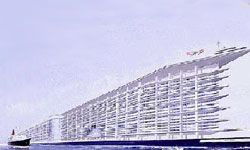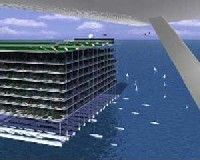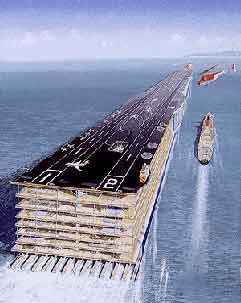Freedom Ship will dwarf any ocean-going vessel operating today -- it will be nearly four times longer than any current cruise ship. For example, the largest cruise ship as of 2023 (the "Icon of the Seas") is approximately 1,198 feet in length. The Freedom Ship, meanwhile, would measure an astounding 4,320 feet in length. In addition, it would weigh 2.7 million tons, which outclasses the Icon of the Seas' 250,800 tons by a massive margin.
Building the Structure
Freedom Ship will be built on top of 520 airtight steel cells that will be bolted together to form a sturdy base. Each cell will be 80 feet (24 meters) tall, between 50 and 100 feet (15 and 30 m) wide and between 50 and 120 feet (15 and 37 m) long. These cells will be assembled to form larger interconnected platforms that are about 300 x 400 feet (91 x 122 m).
These larger units will then be taken out to sea, where they will be put together to form the ship's nearly mile-long base. The rest of the ship will be constructed on top of this base. Norman Nixon, who developed the idea of a floating city, has said that it will take about three years to finish the ship once construction begins.
Engine Power
It will take a tremendous amount of engine power to push the gigantic ship through the water. The vessel will be equipped with 100 diesel engines that can generate 3,700 horsepower each. Developers project the cost of each engine to be at least $1 million.
That may give you an idea of how expensive the project is. Although the total cost of Freedom Ship has not been released, the last estimate stood at $10 billion. The ship's high construction cost will be passed on to residents, but that's only if the project receives the financial backing it requires to get started.


